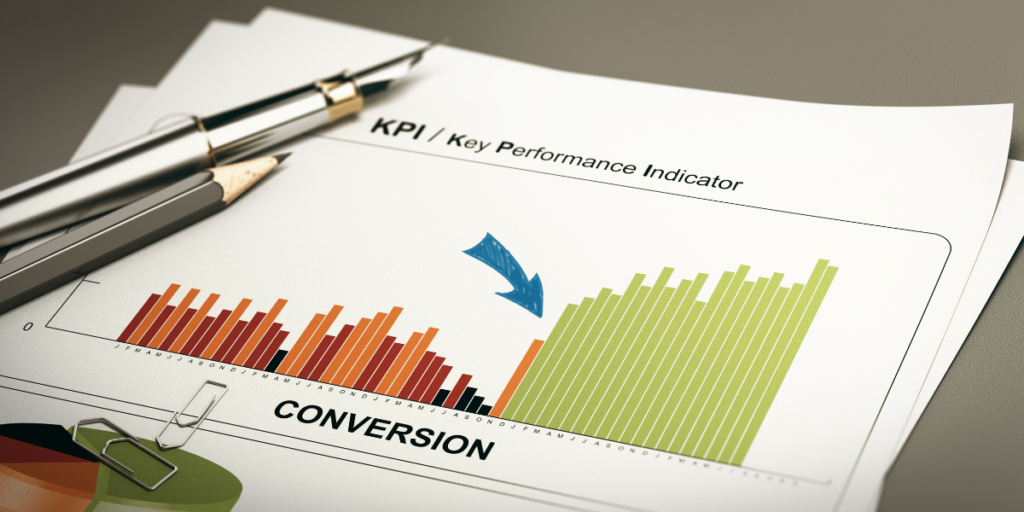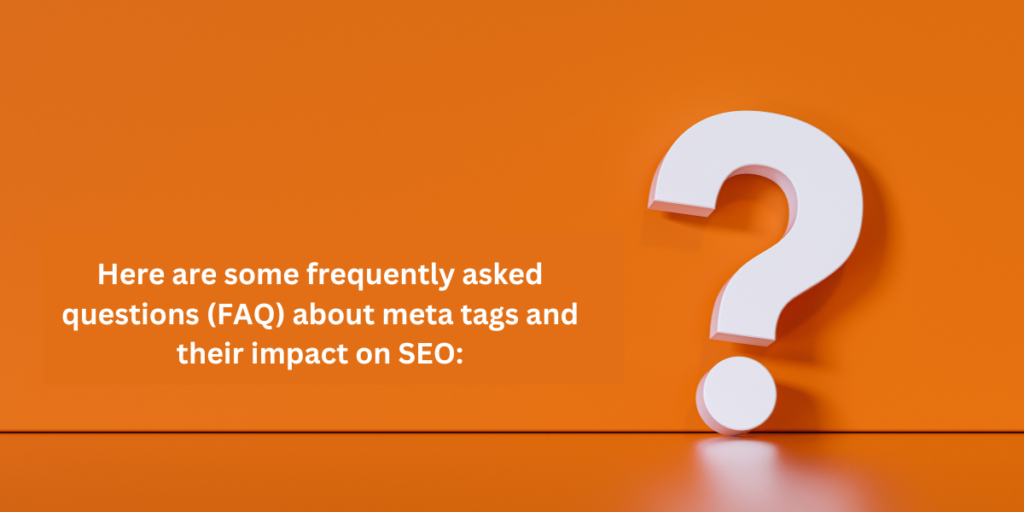The Synergy Between SEO and Conversion Rate Optimization (CRO) 2023!
Introduction
In today’s digital landscape, businesses strive not only to drive organic traffic to their websites but also to convert those visitors into valuable customers. This pursuit has led to the emergence of two crucial strategies: Search Engine Optimization (SEO) and Conversion Rate Optimization (CRO). While distinct in their objectives, these approaches work hand in hand, leveraging their individual strengths to maximize online success. In this article, we will delve into the symbiotic relationship between SEO and CRO, exploring how their combined efforts can propel your website to new heights.

Understanding SEO: Building the Foundation
Search Engine Optimization, or SEO, encompasses a set of practices aimed at improving a website’s visibility and organic rankings on search engine results pages (SERPs). Achieving high rankings entails a comprehensive approach that involves both on-page and off-page optimization strategies.
Also Check The Benefits of Evergreen Content for SEO 2023
On-Page Optimization: Content is King
At the core of every successful SEO campaign lies exceptional content. By crafting engaging, informative, and keyword-rich content, you can establish your website as an authoritative source within your industry. When creating content, it is crucial to conduct thorough keyword research to identify the terms and phrases that your target audience is searching for. Integrating these keywords seamlessly into your content, headers, and meta tags can enhance your website’s relevance and visibility to search engines.
Off-Page Optimization: Building Trust and Authority
In addition to on-page optimization, off-page factors play a significant role in determining search engine rankings. Off-page SEO revolves around building high-quality backlinks from authoritative websites, social media signals, and other external indicators of trust and credibility. The more reputable and relevant websites that link back to your content, the greater your website’s chances of ranking well in search results. By strategically obtaining backlinks, you can boost your website’s authority and improve its visibility in search engine rankings.

The Power of Conversion Rate Optimization (CRO)
While SEO focuses on driving traffic to your website, Conversion Rate Optimization (CRO) takes the baton, focusing on turning those visitors into active participants or customers. CRO involves implementing a variety of techniques to enhance user experience, remove barriers to conversion, and optimize the customer journey.
User Experience: Nurturing Engagement
To maximize conversions, it is essential to create a seamless user experience that keeps visitors engaged and encourages them to take the desired action. This can be achieved through intuitive website navigation, compelling calls-to-action (CTAs), and visually appealing design elements that instill trust and confidence in your brand. By understanding your target audience’s needs and preferences, you can tailor your website’s layout and content to foster positive user experiences that drive conversions.
Removing Conversion Barriers: Streamlining the Process
Conversion barriers can impede your website’s ability to convert visitors into customers. Common barriers include lengthy forms, complex checkout processes, and a lack of clear value propositions. By identifying and removing these obstacles, you can streamline the conversion process, making it easier for visitors to convert. Implementing user-friendly forms, simplifying navigation, and providing transparent pricing and shipping information are just a few ways to optimize your website’s conversion path and increase conversion rates.
Data-Driven Optimization: Iterative Improvements
CRO is not a one-time effort; it is an ongoing process of iterative improvements driven by data analysis. By leveraging analytical tools and conducting A/B testing, you can gain valuable insights into user behavior and preferences. These insights allow you to refine your website, test different design elements, and fine-tune your conversion funnels. By continuously monitoring and optimizing your website based on data-driven decisions, you can achieve significant increases in conversion rates over time.

The Synergy: Combining Forces for Success
While SEO and CRO serve distinct purposes, their combined efforts can generate remarkable results for your online presence. By aligning these strategies and leveraging their synergies, you can create a powerful digital marketing campaign that drives both traffic and conversions. Let’s explore some key areas where SEO and CRO intersect, showcasing the mutually beneficial relationship between the two.
Keyword Optimization for Conversion-Focused Content
Keywords are a fundamental component of SEO, and their importance extends to CRO as well. By identifying keywords that have high search volume and align with your target audience’s intent, you can optimize your content to attract relevant traffic. However, it’s equally important to choose keywords that have conversion potential. These are keywords that indicate a user’s readiness to take action or make a purchase. Incorporating these conversion-focused keywords into your content can attract visitors who are more likely to convert, thus increasing your conversion rates.
Compelling Meta Tags and Snippets
Meta tags and snippets are vital elements that influence both SEO and CRO. When your website appears on search engine results pages, the meta title and description play a crucial role in attracting clicks and enticing users to visit your site. By crafting compelling and relevant meta tags that highlight the value proposition of your content or products, you can increase click-through rates and drive qualified traffic. This optimization technique not only boosts your SEO efforts but also contributes to higher conversion rates by attracting users who are more likely to find value in your offerings.
Page Speed and User Experience
Page speed and user experience are two critical factors that impact both SEO rankings and conversion rates. Slow-loading websites frustrate visitors and increase bounce rates, leading to missed conversion opportunities. On the other hand, fast-loading, user-friendly websites create a positive experience, encourage visitors to stay longer, and increase the likelihood of conversions. Optimizing your website’s page speed, improving mobile responsiveness, and ensuring intuitive navigation all contribute to a seamless user experience that not only pleases visitors but also improves your search engine rankings.

Trust and Authority: Essential for SEO and CRO
Building trust and authority are essential for both SEO and CRO success. From an SEO perspective, search engines value websites that are trusted and authoritative within their niche. By consistently producing high-quality content, earning backlinks from reputable sources, and engaging with your audience, you can enhance your website’s trustworthiness and authority in the eyes of search engines. Similarly, from a CRO perspective, establishing trust and authority is crucial for building customer confidence in your brand. Incorporating trust signals such as customer reviews, testimonials, security badges, and industry affiliations can instill trust and encourage conversions.
Implementing a Comprehensive SEO and CRO Strategy
To outrank other websites and achieve optimal results, it is crucial to implement a comprehensive SEO and CRO strategy that covers various aspects of your website. Here are some actionable steps to consider:
1. Conduct In-Depth Keyword Research
Thorough keyword research forms the foundation of a successful SEO and CRO strategy. Identify relevant keywords and search phrases that align with your target audience’s intent and have high search volume. By understanding the language your potential customers use, you can optimize your content to address their needs and capture their attention. Utilize keyword research tools, analyze competitor websites, and consider long-tail keywords to uncover untapped opportunities.
2. Create Compelling and Optimized Content
Crafting high-quality, engaging, and optimized content is paramount to outranking your competitors. Incorporate the identified keywords naturally throughout your content, including headings, subheadings, and body text. Focus on delivering comprehensive and valuable information that addresses your audience’s pain points and provides solutions. Aim for readability, use clear and concise language, and consider incorporating visual elements, such as images or infographics, to enhance the overall user experience.
3. Optimize On-Page Elements
Optimizing your website’s on-page elements is essential for both SEO and CRO. Pay attention to meta titles, meta descriptions, and URL structures. Ensure that they accurately reflect the content and include relevant keywords. Craft compelling meta descriptions that entice users to click on your link in search results. Additionally, optimize your headers (H1, H2, etc.) to provide a clear hierarchy and structure to your content, making it easier for users to navigate and understand.
4. Build High-Quality Backlinks
Earning high-quality backlinks from authoritative websites is a crucial aspect of SEO. Seek opportunities to collaborate with industry influencers, guest post on reputable blogs, or participate in relevant online communities. Quality backlinks not only enhance your website’s visibility and authority in search engine rankings but also contribute to increased referral traffic, potentially leading to more conversions. Focus on building relationships and providing value to others in your industry to attract quality backlinks naturally.
5. Optimize User Experience and Conversion Paths
Enhancing user experience and optimizing conversion paths are vital for improving both SEO and CRO. Ensure your website is mobile-friendly, as a significant portion of web traffic comes from mobile devices. Streamline the navigation and ensure intuitive user interfaces that guide visitors toward desired actions. Optimize your website’s loading speed to reduce bounce rates and improve user satisfaction. Incorporate clear and compelling calls-to-action (CTAs) that prompt visitors to take the desired action, whether it’s making a purchase, signing up for a newsletter, or contacting your business.
6. Leverage Data Analysis and A/B Testing
Data analysis and A/B testing are powerful tools to refine your SEO and CRO strategies continually. Utilize analytics platforms to gain insights into user behavior, conversion rates, and website performance. Identify areas of improvement, such as high bounce rates or low conversion rates, and experiment with different approaches through A/B testing. Test variations of headlines, CTAs, layouts, or color schemes to determine what resonates best with your audience and drives optimal results.
7. Monitor and Adapt to Algorithm Updates
Search engine algorithms are constantly evolving, and staying informed about the latest updates is crucial for maintaining and improving your rankings. Stay up to date with industry publications, reputable SEO blogs, and search engine guidelines. Adapt your strategies as needed to ensure compliance with best practices and algorithm changes. Regularly monitor your website’s performance, rankings, and conversions to identify any areas that require adjustments or further optimization
Conclusion
In the ever-evolving world of digital marketing, the relationship between SEO and CRO is symbiotic and invaluable. By understanding the intricacies of each strategy and harnessing their combined power, you can create a holistic approach that not only drives organic traffic but also maximizes conversions. From optimizing keywords and meta tags to enhancing user experience and building trust, every aspect of SEO and CRO intertwines to create a robust online presence that outranks competitors and drives meaningful business results.
Remember, SEO and CRO are ongoing processes that require continuous monitoring, analysis, and optimization. By staying informed about the latest industry trends and best practices, you can adapt your strategies to the ever-changing digital landscape and maintain a competitive edge. Embrace the synergy between SEO and CRO, and unlock the full potential of your online success.
Here are some pros and cons of implementing a comprehensive SEO and CRO strategy:

Pros:
- Increased Organic Visibility: By implementing effective SEO practices, your website has the potential to achieve higher organic rankings, resulting in increased visibility and exposure to your target audience.
- Higher Conversion Rates: Combining SEO and CRO techniques can lead to improved user experience, streamlined conversion paths, and optimized content, all of which contribute to higher conversion rates and a better return on investment (ROI).
- Better User Experience: Both SEO and CRO focus on creating a seamless and user-friendly experience. By optimizing your website’s performance, navigation, and content, you can enhance user satisfaction and engagement, leading to longer visit durations and increased brand loyalty.
- Targeted Traffic: Effective keyword research and optimization help attract highly targeted traffic to your website. This means that visitors are more likely to be interested in your offerings, increasing the chances of conversions and generating qualified leads.
- Continuous Improvement: SEO and CRO strategies rely on data analysis and iterative testing. This iterative approach allows you to continuously monitor and optimize your website, identifying areas for improvement and making data-driven decisions to enhance performance over time.
Cons:
- Time-Consuming Process: Implementing a comprehensive SEO and CRO strategy requires time, effort, and ongoing dedication. Keyword research, content creation, optimization, and testing all take significant resources and continuous attention.
- Competitive Landscape: Outranking other websites in highly competitive industries or for popular keywords can be challenging. It may require substantial resources and a long-term commitment to outrank established competitors.
- Algorithm Changes: Search engine algorithms frequently evolve, and updates can impact your website’s rankings. Staying up to date with algorithm changes and adjusting your strategy accordingly is essential to maintain and improve your positions.
- Complexity and Learning Curve: SEO and CRO involve various techniques, tools, and best practices. The complexity of these strategies can present a learning curve for those new to the field. It may be necessary to invest time in understanding the intricacies or hire professionals to ensure effective implementation.
- Balancing SEO and User Experience: Occasionally, there can be a tension between optimizing for search engines and providing the best user experience. Striking the right balance is crucial to ensure that your website ranks well while still delivering valuable and engaging content to visitors.
Understanding these pros and cons can help you make informed decisions and set realistic expectations when implementing an SEO and CRO strategy. By leveraging the strengths of both approaches and addressing the challenges, you can work towards achieving improved rankings, increased traffic, and higher conversion rates for your website.
The Role of Meta Tags in SEO 2023
Introduction
In the ever-evolving landscape of search engine optimization (SEO), understanding the role of meta tags is crucial for achieving better visibility and outranking other websites. At Finest Seo Agency, we recognize the significance of meta tags and their impact on search engine rankings. In this comprehensive guide, we delve into the world of meta tags, exploring their purpose, types, best practices, and the potential they hold for enhancing your website’s SEO performance.

What Are Meta Tags?
Meta tags are snippets of HTML code that provide information about a web page to search engines and website visitors. While they are not directly visible on the webpage itself, meta tags play a vital role in influencing search engine crawlers and determining how your webpage appears in search engine results pages (SERPs).
Types of Meta Tags
1. Title Tag
The title tag, also known as the HTML title element, is one of the most important meta tags for SEO. It defines the title of a webpage and appears as the clickable headline in search engine results. Crafting a compelling and keyword-rich title tag helps search engines understand the content of your page and entices users to click through to your website.
2. Meta Description Tag
The meta description tag provides a concise summary of the webpage’s content. Although it does not directly impact rankings, a well-crafted meta description can significantly influence click-through rates from search results. By incorporating relevant keywords and a compelling call-to-action, you can optimize your meta description to attract more organic traffic to your website.
3. Meta Keywords Tag
In the past, the meta keywords tag played a significant role in SEO. However, due to abuse and keyword stuffing, major search engines now disregard it. It is no longer considered a ranking factor, and including excessive or irrelevant keywords can even harm your website’s SEO efforts.
4. Meta Robots Tag
The meta robots tag instructs search engine crawlers on how to index and handle specific aspects of your webpage. It provides directives such as “index” (allowing indexing of the page), “noindex” (preventing indexing), “follow” (allowing following of links), or “nofollow” (preventing following of links). Proper utilization of the meta robots tag ensures search engines understand your website’s structure and content hierarchy.
5. Canonical Tag
The canonical tag is used to address issues related to duplicate content. It informs search engines about the preferred version of a webpage when multiple versions with similar or identical content exist. By specifying the canonical URL, you can consolidate the ranking signals and avoid diluting your website’s authority.
Also Check International SEO: Expanding Your Reach to Global Markets
Best Practices for Meta Tags

Now that we have explored the various types of meta tags, let’s discuss some best practices to help you optimize them effectively:
1. Relevant and Unique Titles
Craft unique and descriptive title tags for each page of your website. Ensure they accurately reflect the content, contain targeted keywords, and provide a clear idea of what users can expect from your webpage.
2. Compelling Meta Descriptions
Write persuasive meta descriptions that summarize the page’s content concisely. Incorporate relevant keywords, communicate the value proposition of your page, and include a strong call-to-action to entice users to click through.
3. Keyword Research
Thorough keyword research is essential for identifying the terms and phrases users are searching for. By incorporating relevant keywords into your meta tags, you increase the chances of matching search queries and attracting organic traffic.
4. Length and Formatting
Keep your title tags between 50-60 characters and meta descriptions between 120-160 characters to ensure they display correctly in search results. Utilize proper formatting, such as capitalizing the first letter of each word
and using sentence case for the rest. This improves readability and enhances the visual appeal of your meta tags.
5. Avoid Keyword Stuffing
While incorporating relevant keywords is important, avoid excessive keyword usage or keyword stuffing. Search engines penalize websites that engage in such practices. Focus on providing valuable, informative content that naturally incorporates keywords rather than forcefully inserting them into your meta tags.
6. Regularly Review and Update
SEO is an ongoing process, and it’s essential to review and update your meta tags periodically. Stay informed about the latest trends and changes in search engine algorithms. Analyze the performance of your meta tags, monitor keyword rankings, and make necessary adjustments to maintain their effectiveness.
The Impact of Meta Tags on SEO

Meta tags, when optimized effectively, can have a significant impact on your website’s SEO performance. By providing search engines with accurate information about your webpages, you increase the chances of ranking higher in relevant search results. Well-crafted meta tags also enhance the click-through rates and attract more organic traffic to your website.
Additionally, optimizing meta tags contributes to improving user experience. When users find accurate and relevant meta tags in search results, they gain a clearer understanding of what your webpage offers. This increases the likelihood of them clicking through to your website, reducing bounce rates, and potentially improving conversions.
Conclusion
Meta tags are a crucial component of any successful SEO strategy. Understanding their purpose, types, and best practices enables you to optimize your website’s meta tags effectively. By crafting compelling title tags and meta descriptions, conducting thorough keyword research, and regularly reviewing and updating your meta tags, you can improve your website’s visibility, outrank competitors, and attract valuable organic traffic.
At Finest Seo Agency, we specialize in creating high-quality content and implementing effective SEO strategies to help businesses achieve online success. Contact us today to leverage the power of meta tags and elevate your website’s search engine rankings.
FAQ :

Q1: What are meta tags?
A1: Meta tags are snippets of HTML code that provide information about a web page to search engines and website visitors. They play a crucial role in influencing search engine crawlers and determining how your webpage appears in search engine results.
Q2: Which meta tags are important for SEO?
A2: The most important meta tags for SEO are the title tag and meta description tag. The title tag defines the title of a webpage and appears as the clickable headline in search results. The meta description tag provides a concise summary of the webpage’s content and influences click-through rates.
Q3: Do meta tags directly impact search engine rankings?
A3: While meta tags alone do not directly impact search engine rankings, they play a significant role in attracting organic traffic. Well-optimized meta tags improve click-through rates, which can indirectly contribute to better search engine rankings.
Q4: What is the ideal length for title tags and meta descriptions?
A4: Title tags should ideally be between 50-60 characters, while meta descriptions should be between 120-160 characters. By adhering to these lengths, you ensure that your meta tags display correctly in search engine results and maintain readability.
Q5: Can I use multiple meta keywords to improve my SEO?
A5: The meta keywords tag is no longer considered a ranking factor by major search engines. In fact, excessive or irrelevant keyword usage in meta keywords can harm your website’s SEO. It is best to focus on high-quality content and natural keyword incorporation throughout your website.
Q6: How often should I review and update my meta tags?
A6: SEO is an ongoing process, and it’s recommended to review and update your meta tags periodically. Stay informed about the latest trends and changes in search engine algorithms. Analyze the performance of your meta tags, monitor keyword rankings, and make necessary adjustments to maintain their effectiveness.
Q7: Are meta tags the only factor affecting search engine rankings?
A7: No, meta tags are just one piece of the SEO puzzle. Several other factors influence search engine rankings, such as website structure, content quality, backlinks, user experience, and more. A comprehensive SEO strategy should consider all these factors to achieve optimal results.
Q8: Can meta tags improve user experience on my website?
A8: Absolutely! Well-crafted meta tags provide accurate and relevant information about your webpages in search results. This helps users understand what your website offers, leading to better click-through rates, reduced bounce rates, and potentially improved conversions.
Q9: Can I guarantee specific search engine rankings with optimized meta tags?
A9: No, optimizing meta tags does not guarantee specific search engine rankings or outcomes. Search engine algorithms are complex and consider various factors when determining rankings. However, well-optimized meta tags increase the visibility and clickability of your website in search results, which can positively impact your overall SEO performance.
Q10: How can Finest Seo Agency help with meta tag optimization and SEO?
A10: At Finest Seo Agency, we specialize in creating high-quality content and implementing effective SEO strategies. Our team of experts can help optimize your meta tags, improve your website’s search engine visibility, and drive valuable organic traffic to your business. Contact us today to discuss your SEO needs and goals.
The Benefits of Evergreen Content for SEO 2023

Introduction
Welcome to our comprehensive guide on the benefits of evergreen content for SEO. In this article, we will delve deep into the world of evergreen content, exploring its significance and providing you with valuable insights to help you outrank your competitors on search engine result pages (SERPs). Evergreen content is a powerful tool that can drive long-term organic traffic, establish your website as an authority, and improve your overall search rankings. Let’s dive in!
Understanding Evergreen Content
Evergreen content refers to timeless and enduring pieces of content that retain their relevance and value over an extended period. Unlike time-sensitive or news-related articles, evergreen content focuses on providing information, solutions, and insights that remain valid for years to come. It serves as a valuable resource for your audience, attracting continuous traffic and generating consistent engagement.
The Longevity Advantage
One of the primary reasons evergreen content is highly regarded in the world of SEO is its longevity. By creating evergreen articles, you can establish a robust foundation for your website that continues to attract visitors and drive traffic long after its initial publication. The lasting relevance of evergreen content ensures that your website remains a go-to resource in your niche, earning you credibility and trust from both users and search engines.
Building Authority
Creating high-quality evergreen content not only drives traffic but also helps to position your website as an authority in your industry. When your content provides valuable and reliable information, users are more likely to trust your website as a reputable source. This trust translates into higher engagement, longer dwell times, lower bounce rates, and increased social sharing, all of which contribute to improved search rankings.
Key Elements of Evergreen Content
To ensure your evergreen content stands out and outranks your competitors on Google, it’s essential to incorporate key elements that make it highly valuable, comprehensive, and ever-relevant. Let’s explore these elements in detail.

Thorough Research and Analysis
Before creating evergreen content, conducting thorough research and analysis is crucial. Dive deep into your topic, explore various credible sources, and gather valuable insights. By backing your content with reliable data and statistics, you strengthen its credibility and increase its chances of outranking other websites.
Comprehensive and In-Depth Coverage
To create an article that outranks your competitor, it’s important to provide comprehensive and in-depth coverage of the topic. Break it down into subtopics and cover each aspect thoroughly. This approach not only provides value to your readers but also ensures that your content becomes the go-to resource for all related queries.
Engaging and Readable Formatting
While creating evergreen content, it’s important to keep your audience engaged and interested. Utilize subheadings, bullet points, and numbered lists to enhance readability and make your content visually appealing. Incorporating relevant images, infographics, or diagrams can also help convey complex information in a more accessible manner.
Optimized for Keywords
Even though we’re focusing on quality content rather than general SEO rules, it’s essential to optimize your evergreen article for relevant keywords. Identify the primary keywords related to your topic and incorporate them naturally throughout the content. However, avoid keyword stuffing, as it can have a detrimental effect on your search rankings.
Also Check The Benefits of Long-Form Content for SEO
Strategies to Outrank Competitors
Now that we understand the importance of evergreen content and its key elements, let’s explore some strategies to help you outrank your competitors on Google’s SERPs.

Conduct a Competitor Analysis
Begin by conducting a thorough analysis of your competitors’ evergreen content. Identify the articles or resources they have created that currently rank high on search engines. Study their approach, content structure, and keyword usage. This analysis will provide valuable insights into what works in your industry and help you identify areas where you can outperform them.
Identify Content Gaps and Unexplored Angles
Once you have analyzed your competitors, it’s time to identify content gaps and unexplored angles in your niche. Look for topics or subtopics that are not adequately covered by your competitors’ content. By addressing these gaps and providing unique perspectives, you can create content that stands out and attracts both users and search engines.
Create Comprehensive Guides or Tutorials
Comprehensive guides or tutorials are highly valuable types of evergreen content that can set you apart from your competitors. Choose a topic within your industry that is frequently searched for and create a detailed step-by-step guide or tutorial. Include relevant images, videos, or interactive elements to enhance the user experience. By offering a comprehensive resource, you increase the likelihood of outranking other websites that provide less detailed or incomplete information.
Incorporate Expert Insights and Case Studies
Adding expert insights and case studies to your evergreen content can significantly enhance its credibility and value. Reach out to industry experts or conduct interviews to gather their insights on the topic you are covering. Additionally, include relevant case studies or real-life examples that demonstrate the practical application of the information you are providing. By incorporating these elements, you create a rich and comprehensive resource that attracts both users and search engines.
Promote and Share Your Content
Creating high-quality evergreen content is just the first step. To outrank your competitors, you must also focus on promoting and sharing your content effectively. Utilize social media platforms, email newsletters, and industry-specific communities to spread the word about your article. Encourage engagement, comments, and social sharing, as these activities can signal to search engines that your content is valuable and deserving of a higher rank.
Earn Backlinks from High-Quality Sources
Backlinks from authoritative and relevant websites continue to be an important factor in search engine rankings. Develop a strategic outreach plan to earn backlinks from high-quality sources within your industry. Reach out to influencers, industry publications, or reputable blogs and offer your evergreen content as a valuable resource. By earning backlinks, you improve your website’s authority and increase its chances of outranking your competitors.

Conclusion
Evergreen content is a powerful tool that can help you outrank your competitors and improve your search engine rankings. By creating comprehensive, valuable, and timeless resources, you can attract continuous organic traffic, establish your website as an authority, and engage with your audience effectively. Remember to conduct thorough research, provide in-depth coverage, utilize engaging formatting, optimize for keywords, and regularly update your content. By implementing these strategies and staying ahead of your competitors, you can achieve long-term success in the world of SEO.
- We hope you found this guide helpful. If you need assistance with optimizing your website for search engines, Finest Seo Agency is here to help. Contact us today to learn how we can improve your website’s SEO and increase your online visibility.
The Impact of Social Media Shares on SEO 2023

Introduction:
In today’s digital landscape, social media has become an integral part of our lives, with billions of people actively engaging and sharing content. As a business owner or marketer, understanding the impact of social media shares on SEO can be the key to unlocking higher rankings and increased visibility on search engine results pages (SERPs). In this article, we will delve into the significance of social media shares for SEO and provide valuable insights to help you outrank your competitors in the ever-competitive online realm.
Keyword-rich :
The SEO Benefits of Social Media Shares Search engines, particularly Google, consider social signals as a crucial ranking factor. When your content is shared on social media platforms, it indicates its popularity and relevance, making search engines take notice. Let’s explore the SEO benefits that social media shares can bring:
Increased Website Visibility:
When your content is shared on social media, it reaches a wider audience beyond your immediate network. As more users engage with and share your content, it has the potential to go viral, increasing its visibility and driving more traffic to your website. This influx of traffic sends positive signals to search engines, signaling the relevance and quality of your content.
Enhanced Backlink Potential:
Social media shares can also lead to the generation of high-quality backlinks. When influential individuals or websites come across your content through social media channels, they may reference or link back to it on their own websites. These backlinks act as a vote of confidence, signaling to search engines that your content is valuable and worthy of higher rankings.
Keyword-rich : Strategies to Maximize Social Media Shares for SEO

Craft Engaging and Share-Worthy Content:
To encourage social media shares, focus on creating content that resonates with your target audience. Provide informative, valuable, and unique insights that captivate readers and leave them wanting to share your content with their own networks. Incorporate relevant keywords naturally within your content to boost its visibility in search results.
Leverage Social Media Influencers:
Collaborating with influential individuals or popular social media accounts in your industry can significantly amplify the reach and shareability of your content. Identify relevant influencers who align with your brand values and engage them to share your content with their loyal followers. This strategy can generate a ripple effect, exposing your content to a wider audience and increasing the likelihood of shares.
Optimize Social Sharing Buttons:
Make it effortless for users to share your content by strategically placing social sharing buttons on your website. Ensure these buttons are prominently displayed and easily accessible. By streamlining the sharing process, you can encourage visitors to spread your content across various social media platforms, ultimately enhancing its potential for greater visibility and increased organic traffic.
Keyword-rich : Measuring Social Media Impact on SEO

Analyzing Social Engagement Metrics:
Monitoring social engagement metrics such as the number of shares, likes, comments, and mentions can provide valuable insights into the impact of social media on your SEO efforts. Use social media analytics tools to track and measure these metrics, allowing you to identify trends, assess the effectiveness of your content, and make data-driven decisions to improve your SEO strategy.
Tracking Referral Traffic: Another effective way to measure the impact of social media shares on your website’s SEO is by tracking referral traffic. Utilize Google Analytics or other web analytics tools to identify the volume and quality of traffic coming from social media platforms. Analyzing this data can help you identify which social media channels are driving the most relevant traffic to your site, allowing you to optimize your social media and content marketing efforts accordingly.
- Develop a Comprehensive Social Media Strategy: To maximize the impact of social media shares on your SEO, it is essential to have a well-defined social media strategy in place. Determine which platforms align best with your target audience and focus your efforts on building a strong presence on those channels. Tailor your content to suit each platform’s unique characteristics, and engage with your audience consistently to foster meaningful relationships.
- Encourage User-generated Content (UGC): User-generated content can be a powerful driver of social media shares. Encourage your audience to create and share content related to your brand or products. This could include reviews, testimonials, or creative user-generated posts. By actively involving your audience in the content creation process, you not only increase the chances of social media shares but also foster a sense of community and brand loyalty.
- Optimize Your Content for Social Sharing: When creating content, ensure it is easily shareable across various social media platforms. Implement social meta tags to optimize the appearance of your content when shared on social media. Use compelling and attention-grabbing headlines, add relevant images or videos, and include social sharing buttons to encourage users to share your content effortlessly.
- Engage and Interact with Your Audience: Building a strong online community requires active engagement and interaction. Respond to comments, acknowledge and appreciate social media shares, and engage in meaningful conversations with your audience. This not only strengthens your relationship with existing followers but also encourages them to continue sharing your content with their networks.
- Leverage Hashtags and Trending Topics: Stay up-to-date with the latest trends and popular hashtags within your industry. Incorporate these trending topics into your content and social media posts to increase the likelihood of shares and engagement. By joining relevant conversations and capitalizing on viral trends, you can amplify your reach and attract new followers who are more likely to share your content.

Conclusion
The impact of social media shares on SEO cannot be underestimated. By understanding the significance of social signals and implementing effective strategies, you can enhance your content’s visibility, increase organic traffic, and outrank your competitors in search engine results. Leverage the power of social media to create share-worthy content, engage with your audience, and track the impact through relevant metrics. Stay proactive, adaptive, and consistent in your social media efforts to harness the full potential of social media shares for SEO success.
- We hope you found this guide helpful. If you need assistance with optimizing your website for search engines, Finest Seo Agency is here to help. Contact us today to learn how we can improve your website’s SEO and increase your online visibility.
The Benefits of Long-Form Content for SEO

Introduction
In the fast-paced digital world, where attention spans are dwindling, the value of long-form content often gets overlooked. However, for those seeking to dominate search engine rankings and captivate their audience, embracing the benefits of long-form content can be a game-changer. In this article, we will delve into the reasons why long-form content is crucial for SEO success and how it can help you outrank your competitors on Google.
I. Enhancing Search Engine Visibility
1. Long-Form Content and Keyword Optimization
Long-form content provides ample opportunities to strategically incorporate relevant keywords, which is essential for search engine optimization (SEO). By writing in-depth articles that cover a wide range of subtopics related to your main keyword, you increase the likelihood of ranking higher in search engine results pages (SERPs).
2. Comprehensive Coverage and Semantic SEO
Search engines like Google increasingly emphasize the importance of comprehensive and authoritative content. Long-form articles enable you to explore your topic in-depth, covering various aspects and providing a comprehensive resource for readers. This approach aligns with semantic SEO, which focuses on delivering contextually relevant content to searchers.

II. Engaging Your Audience
1. Building Trust and Authority
Long-form content allows you to establish yourself as an industry authority and build trust with your audience. By providing in-depth analysis, expert insights, and detailed information, you demonstrate your expertise, boosting credibility, and encouraging readers to return to your site for future content.
2. Enhanced User Experience
By presenting comprehensive information within a single piece of content, you create a seamless user experience. Readers can find all the information they need without having to navigate through multiple pages or search for additional resources. This convenience contributes to increased engagement, longer on-page time, and a reduced bounce rate.
3. Encouraging Social Sharing and Backlinks
Compelling long-form content is more likely to be shared on social media platforms and attract backlinks from other websites. The thoroughness and value provided in your content make it highly shareable, increasing its reach and amplifying your SEO efforts.
III. Tips for Creating Effective Long-Form Content
1. Define Your Target Audience
Before embarking on creating long-form content, it is crucial to identify your target audience and understand their needs, preferences, and pain points. This knowledge will help you tailor your content to resonate with your readers, resulting in increased engagement and higher conversion rates.
2. Conduct Thorough Research
Comprehensive research is the foundation of exceptional long-form content. Dive deep into reliable sources, gather data, statistics, case studies, and expert opinions. This research will provide you with the necessary insights to create unique, informative, and valuable content that outranks your competitors.
3. Structure and Formatting
Organize your long-form content in a logical and coherent manner. Use subheadings, bullet points, and numbered lists to improve readability and enhance the user experience. A well-structured article not only pleases readers but also helps search engines understand the hierarchy of information.
4. Visual Enhancements
Incorporating visual elements, such as images, infographics, and diagrams, can further enhance the appeal and clarity of your long-form content. Visual aids help break up the text, making it more digestible and engaging for your audience. For instance, consider adding a mermaid diagram showcasing the structure of a successful long-form article.
IV. Optimizing Your Long-Form Content for SEO
1. On-Page SEO Techniques
To maximize the SEO potential of your long-form content, employ the following on-page optimization techniques:
- Incorporate your target keyword naturally throughout the article, including in the title, headings, and body text.
- Utilize meta tags, such as title tags and meta descriptions, to provide concise summaries of your content for search engines and readers.
- Optimize image alt text by including relevant keywords and descriptive phrases.
2. Internal and External Linking
Integrate internal links within your long-form content to guide readers to other relevant pages on your website. This not only improves the user experience but also helps search engines understand the structure and relevance of your content.
Additionally, seek opportunities for external linking to authoritative sources. Linking to reputable websites enhances your content’s credibility and signals to search engines that your content is well-researched and trustworthy.
3. Mobile Optimization
With the majority of internet users accessing content through mobile devices, it is crucial to ensure your long-form content is optimized for mobile viewing. Responsive design, fast loading times, and easy navigation are key factors in providing a seamless mobile experience, which can positively impact your search rankings.

Conclusion
Long-form content is a potent tool for outranking your competitors and establishing a strong online presence. By leveraging the benefits of long-form content, you can enhance your search engine visibility, engage your audience, and build trust and authority within your industry.
Remember to optimize your content for SEO, structure it effectively, and provide valuable insights to your target audience. By delivering comprehensive and compelling long-form content, you position yourself as an industry leader, captivate your readers, and improve your chances of dominating the search engine rankings.
So, embrace the power of long-form content and take your SEO efforts to new heights. Start crafting exceptional, informative, and engaging articles that not only outrank your competitors but also resonate with your audience and drive meaningful results.
Call to Action
Ready to elevate your content strategy and boost your SEO rankings with exceptional long-form content? Contact us today to discuss how our team of expert writers can create compelling articles tailored to your specific industry and target audience.
Remember, the path to SEO success starts with creating content that outranks the competition and captivates your readers. Don’t miss out on the opportunities provided by long-form content. Let’s embark on this journey together and make your website a frontrunner in search engine rankings.
- We hope you found this guide helpful. If you need assistance with optimizing your website for search engines, Finest Seo Agency is here to help. Contact us today to learn how we can improve your website’s SEO and increase your online visibility.
International SEO: Expanding Your Reach to Global Markets

Introduction
In today’s interconnected world, expanding your online presence to global markets has become a crucial aspect of business growth. International search engine optimization (SEO) plays a pivotal role in ensuring your website reaches a wider audience, drives targeted traffic, and ultimately generates more leads and sales. In this comprehensive guide, we will explore the key strategies and best practices to outrank your competitors in international SEO, helping you establish a strong global online presence.
Understanding the Importance of International SEO
Expanding your reach to global markets through effective international SEO brings numerous benefits. By optimizing your website for international audiences, you can:
- Increase Visibility: Ranking higher in search engine results pages (SERPs) across different countries allows you to gain exposure to a broader audience.
- Target Relevant Traffic: By tailoring your SEO efforts to specific countries or regions, you attract visitors who are more likely to convert into customers.
- Enhance User Experience: Adapting your website to cater to international audiences ensures a seamless browsing experience, leading to increased engagement and customer satisfaction.
- Outperform Competitors: By outranking your competitors in search results, you position your brand as a leader in the global market and gain a competitive edge.
Developing a Solid International SEO Strategy
To outrank your competitors and capture the attention of global audiences, it is essential to implement a well-rounded international SEO strategy. Here are the key steps to follow:
1. Keyword Research for International Markets
Conducting thorough keyword research specific to each target market is crucial. Use keyword research tools and analyze local search trends to identify high-volume and relevant keywords. Take cultural and linguistic differences into account to ensure accurate localization.
2. Localized Content Creation
Creating high-quality, localized content is paramount for international SEO success. Translate your content by professional linguists to maintain linguistic integrity and cultural relevance. Consider local idioms, preferences, and customs to connect with your target audience on a deeper level.
3. Hreflang Attribute Implementation
Implement the hreflang attribute in your website’s HTML code to indicate language and regional targeting. This helps search engines understand which version of your content to serve to users in different locations. Proper implementation of hreflang tags ensures your website appears in the right SERPs.
4. International Link Building
Building a strong backlink profile is crucial for international SEO. Seek opportunities to earn backlinks from reputable websites in your target markets. Collaborate with local influencers, industry publications, and authoritative directories to improve your website’s credibility and visibility.
5. Website Localization
Optimize your website’s structure and design to accommodate international audiences. Pay attention to factors such as language selection, currency conversion, and localized contact information. Implement geotargeting techniques to serve location-specific content to your visitors.
Here are some additional points to further enhance your understanding of international SEO:

1. Social Media Localization
In addition to optimizing your website, it’s crucial to extend your efforts to social media platforms. Localize your social media profiles, posts, and ads to resonate with the cultural nuances and preferences of your target audience. Engage with users in their native language and leverage popular local social media networks to maximize your brand’s visibility and engagement.
2. Multilingual Customer Support
To provide exceptional user experience, consider offering multilingual customer support. This helps address the concerns and inquiries of international customers in their preferred language, fostering trust and loyalty. By providing seamless support, you can improve customer satisfaction and gain a competitive advantage in global markets.
3. International SEO Monitoring and Analytics
Monitoring and analyzing your international SEO efforts is crucial for ongoing optimization. Utilize tools like Google Analytics and Search Console to track the performance of your website in different regions. Pay attention to key metrics such as organic traffic, conversions, bounce rates, and keyword rankings. This data will guide your decision-making process and enable you to make data-driven optimizations.
4. Localized Link Building and Partnerships
In addition to international link building, focus on building partnerships and earning backlinks from local businesses and organizations in your target markets. Collaborate with influencers, industry associations, and local directories to increase your website’s visibility and authority in specific regions. These localized link building efforts can significantly impact your search rankings and attract targeted traffic.
5. Voice Search Optimization
As voice search continues to rise in popularity, optimizing your website for voice queries is essential for international SEO success. Understand the language patterns and conversational phrases used in different regions to tailor your content to voice search queries. Consider creating FAQ-style content and incorporating natural language processing techniques to align with voice search optimization best practices.
6. Continuous Optimization and Adaptation
International SEO is an ongoing process that requires continuous optimization and adaptation. Stay updated with the latest SEO trends, algorithm changes, and market dynamics in your target regions. Regularly audit and analyze your international SEO efforts to identify areas for improvement and implement necessary adjustments to maintain your competitive edge.
Remember, international SEO is a multifaceted discipline that requires a deep understanding of local markets, cultural sensitivities, and search engine algorithms. By combining technical optimization, localized content creation, strategic link building, and constant monitoring, you can effectively outrank your competitors and expand your reach in global markets.
The Impact of Mobile Optimization on International SEO

In an increasingly mobile-dominated world, mobile optimization is no longer optional. It is a key factor in international SEO success. Consider the following strategies to optimize your website for mobile users:
- Responsive Design: Ensure your website adapts seamlessly to different screen sizes and resolutions.
- Mobile-Friendly Content: Create concise and scannable content that is easy to read on smaller screens.
- Page Speed Optimization: Optimize your website’s loading speed to provide a fast and smooth mobile browsing experience.
- Mobile-First Indexing: Prioritize mobile optimization to align with search engines’ mobile-first indexing approach.
Conclusion
Expanding your reach to global markets through effective international SEO is a powerful strategy to unlock growth opportunities and outrank your competitors. By implementing a comprehensive international SEO strategy, conducting localized keyword research, creating high-quality content, and optimizing your website for mobile users, you can establish a strong online presence in international markets. Remember to implement the hreflang attribute to indicate language and regional targeting, engage in international link building to improve your website’s credibility, and focus on website localization to cater to the specific needs of your target audience.
SEO for B2B Companies: Strategies for Generating Leads

Introduction
In today’s competitive digital landscape, effective Search Engine Optimization (SEO) strategies are crucial for B2B companies aiming to generate quality leads. With the right approach, B2B businesses can outrank their competitors and increase their online visibility, ultimately driving more targeted traffic to their websites. In this comprehensive guide, we will delve into powerful SEO techniques tailored specifically for B2B companies, providing you with actionable insights to optimize your website and outperform your competition.
Understanding B2B SEO
Defining B2B SEO
B2B SEO is a specialized branch of search engine optimization that focuses on optimizing websites and online content to attract and engage business-to-business audiences. Unlike B2C (business-to-consumer) SEO, which primarily targets individual consumers, B2B SEO strategies are tailored to meet the unique needs and preferences of corporate decision-makers, industry professionals, and organizations.
Identifying Your Target Audience
Before diving into SEO strategies, it is crucial to understand your target audience fully. Identify the key decision-makers and stakeholders in the B2B space who are most likely to engage with your products or services. Conduct thorough market research to gain insights into their pain points, motivations, and preferred communication channels. This information will help shape your SEO efforts and create content that resonates with your target audience.
On-Page SEO Techniques

Keyword Research and Optimization
To outrank your competitors, keyword research plays a pivotal role. Identify relevant keywords and phrases that align with your target audience’s search intent. Utilize keyword research tools to uncover high-volume, low-competition keywords specific to your industry. Incorporate these keywords strategically within your website’s content, including titles, headings, meta descriptions, and body text.
Compelling and Engaging Content
Creating high-quality content is paramount for successful B2B SEO. Craft informative, engaging, and well-structured articles, blog posts, case studies, and whitepapers that address your audience’s pain points and provide valuable solutions. Use a conversational tone and avoid jargon whenever possible. Long-form content tends to perform well in search rankings, as it allows for more comprehensive coverage of a topic.
Optimized Meta Tags and Descriptions
Optimize your website’s meta tags, including title tags and meta descriptions, to improve visibility in search engine result pages (SERPs). Ensure that your meta tags accurately reflect the content of each page and incorporate relevant keywords. Compelling meta descriptions act as persuasive snippets that entice users to click through to your website.
User-Friendly URL Structure
Create clean and user-friendly URLs that provide a clear indication of the page’s content. Include relevant keywords in the URL whenever possible to enhance SEO visibility. For example, instead of using a generic URL like “https://www.example.com/page1“, use a descriptive URL like “https://www.example.com/b2b-seo-strategies“.
Off-Page SEO Techniques

Link Building
Developing a robust link building strategy is crucial for B2B SEO success. Acquire high-quality backlinks from reputable websites and industry influencers. Guest posting on authoritative platforms, participating in industry forums, and building relationships with thought leaders can help generate valuable backlinks to your website. Focus on quality rather than quantity when it comes to link building.
Social Media Engagement
Leverage social media platforms to enhance your B2B SEO efforts. Engage with your target audience on platforms such as LinkedIn, Twitter, and industry-specific forums. Share valuable content, participate in relevant discussions, and establish your brand as a thought leader in your industry. Social media signals can indirectly influence search rankings and drive organic traffic to your website.
Measuring Success and Continuous Improvement
Analyzing Performance Metrics
To gauge the effectiveness of your B2B SEO strategies, it is essential to analyze key performance metrics. Utilize web analytics tools, such as Google Analytics, to track metrics such as organic traffic, bounce rate, average session duration, and conversion rates. Analyzing these metrics provides insights into the impact of your SEO efforts and helps identify areas for improvement.
Conversion Rate Optimization (CRO)
While driving traffic to your website is crucial, the ultimate goal is to convert visitors into leads or customers. Implement conversion rate optimization techniques to maximize the effectiveness of your website in capturing and nurturing leads. A/B testing, optimizing landing pages, improving call-to-action buttons, and streamlining the conversion funnel are some CRO strategies that can enhance your B2B SEO outcomes.
Continuous SEO Audits and Updates
The digital landscape is constantly evolving, and search engine algorithms undergo regular updates. Conduct regular SEO audits to ensure your website is aligned with the latest best practices. Evaluate website performance, identify technical issues, and optimize content based on keyword performance. Continuously update and refine your SEO strategies to stay ahead of the competition.
Conclusion

Effective SEO strategies are indispensable for B2B companies seeking to generate quality leads and outrank their competitors in search engine rankings. By understanding your target audience, conducting thorough keyword research, optimizing on-page elements, implementing off-page techniques, and continually measuring and improving performance, you can elevate your B2B SEO efforts to new heights. Remember, SEO is an ongoing process that requires dedication and adaptation to stay ahead in the ever-changing digital landscape. By following the strategies outlined in this guide, you are well-positioned to unlock the potential of B2B SEO and drive significant lead generation for your business.
SEO Metrics to Track: Key Performance Indicators (KPIs)

Introduction
Welcome to our comprehensive guide on SEO metrics to track and the essential key performance indicators (KPIs) that can help your website outrank the competition in Google search results. In this article, we will provide you with invaluable insights and strategies to optimize your website’s performance, increase organic traffic, and improve search engine rankings. By understanding and effectively utilizing these SEO metrics and KPIs, you will be equipped with the necessary knowledge to achieve online success.
The Importance of SEO Metrics and KPIs
In today’s digital landscape, SEO metrics and KPIs play a crucial role in evaluating the effectiveness of your website’s SEO strategy. They provide actionable data that enables you to identify strengths, weaknesses, and opportunities for improvement. By regularly tracking and analyzing these metrics, you can make informed decisions and implement targeted optimizations to enhance your website’s visibility and organic search rankings.
1. Organic Traffic
Organic traffic refers to the visitors who land on your website through unpaid, natural search results. It is a vital metric to track as it indicates the overall performance of your SEO efforts. By increasing organic traffic, you can expand your website’s reach, attract a larger audience, and ultimately generate more conversions. To improve organic traffic, focus on optimizing your website’s content, implementing relevant keywords, and enhancing user experience.
2. Keyword Rankings
Keyword rankings reflect the positions of your web pages in search engine results pages (SERPs) for specific keywords. Monitoring your keyword rankings allows you to evaluate the effectiveness of your SEO campaigns and adjust your strategy accordingly. Conduct thorough keyword research, identify high-volume and relevant keywords, and strategically optimize your content to improve keyword rankings.
3. Click-Through Rate (CTR)
Click-through rate measures the percentage of users who click on your website’s link when it appears in the search results. A high CTR indicates that your title and meta description are compelling and relevant to the user’s query. Enhance your CTR by crafting engaging and keyword-rich meta tags, writing compelling headlines, and ensuring that your snippets provide valuable information.
4. Bounce Rate
Bounce rate refers to the percentage of users who leave your website after viewing only one page. A high bounce rate can indicate that your website’s content or user experience needs improvement. To reduce bounce rate, focus on delivering high-quality, relevant content that meets the user’s intent. Ensure fast page load times, intuitive navigation, and a visually appealing website design.
5. Conversion Rate
Conversion rate measures the percentage of website visitors who complete a desired action, such as making a purchase, filling out a form, or subscribing to a newsletter. A high conversion rate indicates the effectiveness of your website in driving user engagement and achieving your business goals. Optimize your conversion rate by improving the clarity of your calls-to-action, simplifying the conversion process, and building trust with your audience.

6. Backlinks
Backlinks are incoming links from external websites to your own. They are a significant ranking factor and can greatly influence your website’s authority and visibility in search results. Focus on building high-quality backlinks from authoritative and relevant sources. Implement outreach strategies, create valuable content, and engage with industry influencers to attract natural backlinks.
7. Page Speed
Page speed is a critical factor in user experience and search engine rankings. Slow-loading websites can frustrate users and lead to higher bounce rates. Optimize your website’s speed by compressing images, minifying CSS and JavaScript files, leveraging browser caching, and utilizing content delivery networks (CDNs). By improving page speed, you can enhance user satisfaction and boost search rankings.
8. Mobile-Friendliness
As mobile usage continues to dominate internet traffic, ensuring that your website is mobile-friendly is crucial for SEO success. Google prioritizes mobile-friendly websites in its search results, providing a better user experience for mobile users. Optimize your website for mobile devices by implementing responsive design, optimizing page load speed, and ensuring that all content and functionalities are accessible and user-friendly on mobile devices.
9. Dwell Time
Dwell time refers to the amount of time users spend on your website after clicking through from search results. It is an indirect measure of user satisfaction and engagement. To increase dwell time, focus on providing high-quality, informative, and engaging content that meets the user’s needs. Include multimedia elements, such as images, videos, and infographics, to enhance user engagement and encourage longer visit durations
.
10. Social Signals
Social signals are indicators of your website’s popularity and credibility on social media platforms. While the direct impact of social signals on search rankings is debated, a strong social media presence can indirectly benefit your SEO efforts. Engage with your audience on social media, encourage social sharing of your content, and leverage social media platforms to build brand awareness and attract potential backlinks.
11. On-Page Optimization
On-page optimization involves optimizing various elements on individual web pages to improve their search engine rankings. Focus on optimizing title tags, meta descriptions, heading tags, and URL structures with relevant keywords. Ensure that your content is well-structured, easily readable, and provides valuable information to users. Incorporate keyword variations naturally throughout your content, but avoid keyword stuffing, as it can harm your rankings.

12. User Experience (UX)
User experience plays a vital role in SEO. A positive user experience leads to increased engagement, lower bounce rates, and higher conversions. Optimize your website’s UX by prioritizing intuitive navigation, clear and concise content, visually appealing design, and fast-loading pages. Conduct user testing and gather feedback to identify areas for improvement and enhance the overall user experience.
13. Content Strategy
Developing a comprehensive content strategy is crucial for SEO success. Create high-quality, relevant, and valuable content that caters to your target audience’s needs and interests. Conduct keyword research to identify relevant topics and incorporate them naturally into your content. Aim for in-depth, informative articles that provide comprehensive solutions to users’ queries. Regularly update your content to ensure its relevance and freshness.
14. Schema Markup
Implementing schema markup on your website can enhance its visibility in search results and improve click-through rates. Schema markup provides additional context to search engines about your content, helping them understand its meaning. Utilize structured data markup to highlight important information such as reviews, ratings, prices, events, and more. This can result in rich snippets and featured snippets, increasing your website’s visibility and attracting more organic traffic.
15. Local SEO
For businesses targeting local customers, optimizing for local SEO is essential. Claim and optimize your Google My Business listing, ensuring accurate and up-to-date information such as your address, phone number, and business hours. Encourage customers to leave reviews, respond to reviews promptly, and actively engage with the local community. Leverage local keywords and location-specific content to improve your visibility in local search results.
16. Competitor Analysis
Regularly analyzing your competitors’ SEO strategies can provide valuable insights and help you identify areas for improvement. Evaluate their keyword targeting, content quality, backlink profiles, and social media presence. Identify opportunities to differentiate yourself and offer unique value to your target audience. By understanding your competitors’ strengths and weaknesses, you can refine your own SEO strategy to surpass them in search rankings.
17. Analytics and Reporting
Effective SEO requires continuous monitoring, analysis, and reporting of relevant metrics. Utilize tools like Google Analytics and Google Search Console to track and analyze your website’s performance. Set up custom dashboards and reports to monitor key metrics and identify trends. Regularly review and analyze the data to gain actionable insights, make data-driven decisions, and optimize your SEO strategy accordingly.
18. Link Building
Building high-quality backlinks remains a crucial aspect of SEO. Focus on acquiring backlinks from authoritative and relevant websites within your industry. Implement a variety of link-building tactics, such as guest blogging, influencer outreach, and content promotion. Create valuable, shareable content that naturally attracts backlinks from reputable sources. However, always prioritize quality over quantity, as low-quality or spammy backlinks can harm your website’s rankings.
19. Technical SEO
Technical SEO involves optimizing the technical aspects of your website to improve its crawling, indexing, and overall performance. Ensure that your website has clean and search engine-friendly URLs, optimized meta tags, proper header tags, XML sitemaps, and a robots.txt file. Conduct regular website audits to identify and fix technical issues such as broken links, duplicate content, and slow page speed. Optimizing your website technically helps search engines understand and rank your content effectively.
Conclusion

By implementing these advanced SEO strategies and tracking the essential metrics and KPIs discussed in this article, you can effectively outrank other websites and achieve higher visibility in Google search results. Remember to continually adapt and optimize your SEO efforts based on data analysis and industry trends. Stay informed about algorithm updates, invest in high-quality content, and consistently work towards improving user experience. With dedication and a comprehensive SEO approach, you can elevate your website’s rankings and drive significant organic traffic to achieve your business goals.
The Role of Social Signals in SEO

Introduction
In today’s digital landscape, search engine optimization (SEO) plays a crucial role in improving a website’s visibility and attracting organic traffic. As businesses strive to outrank their competitors in search engine results pages (SERPs), one aspect that holds significant promise is the utilization of social signals. In this comprehensive article, we will explore the role of social signals in SEO, highlighting their impact on search rankings and providing valuable insights for website owners and marketers.
Understanding Social Signals
Social signals refer to the collective actions and engagement metrics generated by users on various social media platforms. These signals encompass likes, shares, comments, and other forms of interaction, indicating the relevance and popularity of a particular piece of content. Search engines like Google recognize social signals as indicators of content quality, user satisfaction, and overall website authority. By leveraging the power of social signals, websites can establish a strong online presence and improve their SEO performance.
Enhancing Search Rankings with Social Signals

1. Increased Website Visibility
Social signals act as a virtual endorsement system, with users expressing their interest and approval of content by engaging with it. When a webpage receives a substantial number of social shares, search engines interpret this as a positive signal, indicating that the content is valuable and worth promoting. Consequently, the visibility of the website improves, leading to higher organic search rankings.
2. Improved Backlink Opportunities
High-quality content that garners significant social engagement is more likely to attract attention from other website owners, bloggers, and influencers. As a result, the chances of obtaining valuable backlinks from reputable sources increase. Backlinks, or inbound links, are essential for SEO as they signal to search engines that a website is trustworthy and authoritative. By leveraging social signals, websites can amplify their backlink acquisition efforts, further enhancing their search rankings.
3. Enhanced User Engagement and Experience
Social signals are an indication of user engagement and satisfaction. When users actively participate in discussions, share content, or leave comments, it reflects their genuine interest in the subject matter. This engagement not only builds a loyal community but also enhances the overall user experience. Websites that prioritize user engagement and interaction tend to rank higher in search results due to their ability to deliver valuable and engaging content.
4. Social Proof and Trustworthiness
Human beings are inherently social creatures, and we tend to trust and follow the actions of others. Social signals serve as a form of social proof, validating the credibility and trustworthiness of a website. When users encounter content that has been widely shared and positively received on social media, they are more likely to perceive it as reliable and authoritative. This perceived trust translates into improved search rankings and increased organic traffic.
Strategies to Leverage Social Signals Effectively

Now that we understand the significance of social signals in SEO, let’s explore some strategies that can help websites harness their power:
- Create Engaging and Shareable Content: Develop high-quality content that is informative, entertaining, or emotionally resonant. Craft compelling headlines, incorporate multimedia elements, and provide unique perspectives to encourage social sharing.
- Optimize Social Media Sharing: Ensure that your web pages are equipped with social sharing buttons, making it effortless for users to share your content across various social platforms. Additionally, consider implementing Open Graph tags and Twitter Cards to optimize how your content appears when shared.
- Actively Engage on Social Media: Foster meaningful interactions with your audience by responding to comments, answering questions, and participating in relevant conversations. This engagement not only boosts social signals but also establishes your brand as an authority in your industry.
- Influencer Collaboration: Identify influencers or thought leaders in your niche and collaborate with them to amplify your content’s reach. Influencers often have substantial social media followings and can help generate social signals through their endorsements and shares. By partnering with influencers, you can tap into their established networks and leverage their credibility to enhance your website’s visibility and search rankings.
- Encourage User Engagement: Actively encourage user engagement by incorporating call-to-action prompts within your content. Encourage readers to share their thoughts, ask questions, and provide feedback. This not only increases social signals but also fosters a sense of community and loyalty around your brand.
- Monitor and Analyze Social Metrics: Regularly monitor and analyze social metrics to gain insights into which types of content are resonating with your audience. Pay attention to engagement rates, reach, and the virality of your posts. This data can help you refine your content strategy and tailor it to maximize social signals and improve your search rankings.
- Integrate Social Sharing in Email Marketing: Extend the reach of your content by integrating social sharing buttons in your email marketing campaigns. Encourage subscribers to share your newsletters and blog updates with their networks, leveraging the power of social signals to enhance your website’s visibility.
- Harness User-Generated Content: User-generated content, such as customer reviews, testimonials, and user-submitted photos, can be a powerful source of social signals. Encourage your audience to share their experiences and opinions, showcasing their contributions on your website and social media platforms. This not only boosts social signals but also builds trust and authenticity around your brand.
- Stay Active on Relevant Social Platforms: Identify the social media platforms that resonate most with your target audience and maintain an active presence on those channels. Regularly share valuable content, engage with your followers, and participate in industry-related discussions. By consistently nurturing your social media presence, you can generate a steady stream of social signals that contribute to improved search rankings.
- Track and Adapt to Algorithm Updates: Stay informed about search engine algorithm updates, as they may impact the weightage given to social signals. Search engines continually refine their algorithms to ensure the most relevant and authoritative content ranks highest. By staying up-to-date with these changes, you can adjust your social signals strategy accordingly and maintain a competitive edge.

Conclusion
In the ever-evolving landscape of SEO, social signals have emerged as a valuable asset for website owners and marketers seeking to improve their search rankings. By effectively leveraging social signals, websites can enhance their visibility, foster user engagement, and build trust and credibility. Implementing strategies such as creating shareable content, optimizing social media sharing, collaborating with influencers, and actively engaging with your audience can significantly impact your website’s search rankings. Stay proactive, adapt to algorithm changes, and monitor social metrics to continually optimize your social signals strategy. Remember, in the competitive world of SEO, harnessing the power of social signals can give you a competitive edge and drive organic traffic to your website.
SEO Tools and Software: A Comprehensive Guide

Introduction
In today’s digital landscape, search engine optimization (SEO) has become an integral part of any successful online presence. As businesses strive to increase their visibility and attract organic traffic, the utilization of cutting-edge SEO tools and software has emerged as a game-changer. This comprehensive guide explores the vast array of SEO tools and software available, empowering businesses like yours to outrank competitors and achieve remarkable online success.
Unveiling the SEO Toolbox
Keyword Research Tools: Unlocking the Language of the Web
Keywords are the backbone of any effective SEO strategy. By understanding the language used by your target audience, you can tailor your content to align with their needs and desires. Keyword research tools, such as Google Keyword Planner and Moz Keyword Explorer, enable you to uncover valuable insights into search volume, competition, and related keywords. Armed with this information, you can create captivating content that resonates with your audience while optimizing for search engine algorithms.
On-Page Optimization Tools: Crafting SEO-Friendly Content
Ensuring that your webpages are optimized for search engines is paramount to achieve higher rankings. On-page optimization tools, such as Yoast SEO and SEMrush, provide invaluable assistance by analyzing various aspects of your content, including keyword usage, readability, and meta tags. These tools offer actionable recommendations, allowing you to fine-tune your content for optimal performance and relevance.
Technical SEO Tools: Enhancing Website Performance
Technical SEO plays a crucial role in determining your website’s overall visibility and user experience. Tools like Screaming Frog and Google Search Console empower you to uncover technical issues, such as broken links, duplicate content, and crawl errors. By addressing these issues promptly, you can improve your website’s performance, ensuring that search engines can easily crawl and index your pages.

Backlink Analysis Tools: Building a Network of Authority
Backlinks remain a significant factor in search engine rankings, as they signal trust and authority to search engines. Backlink analysis tools, such as Ahrefs and Majestic, enable you to delve deep into your backlink profile, understanding the quality, quantity, and relevance of the links pointing to your website. Armed with this knowledge, you can devise a robust link-building strategy, acquiring high-quality backlinks that propel your website’s rankings to new heights.
Rank Tracking Tools: Monitoring and Measuring Success
To gauge the effectiveness of your SEO efforts, it is crucial to track your rankings regularly. Rank tracking tools, such as SEMrush and AccuRanker, offer comprehensive insights into your website’s performance in search engine results pages (SERPs). These tools enable you to monitor keyword rankings, track competitors, and measure the impact of your optimization strategies. By staying informed, you can adapt your approach and maintain a competitive edge.

The Power of SEO Software Suites
While individual SEO tools are incredibly valuable, leveraging the power of comprehensive SEO software suites can take your optimization efforts to new heights. These all-in-one solutions provide a unified platform for managing various aspects of your SEO strategy, offering seamless integration and comprehensive data analysis.
By utilizing keyword research tools like Google Keyword Planner and Moz Keyword Explorer, you can unlock valuable insights into the language of the web, enabling you to create content that resonates with your target audience. These tools provide comprehensive data on search volume, competition, and related keywords, empowering you to tailor your content strategy accordingly.
On-page optimization tools such as Yoast SEO and SEMrush offer invaluable assistance in crafting SEO-friendly content. They analyze various aspects of your content, including keyword usage, readability, and meta tags, providing actionable recommendations to optimize your webpages for better search engine visibility.
Addressing technical issues is paramount for optimal website performance. Tools like Screaming Frog and Google Search Console help identify problems such as broken links, duplicate content, and crawl errors. By rectifying these issues promptly, you enhance your website’s crawlability and indexability, ultimately improving its overall ranking potential.
Building a network of authority through quality backlinks is a crucial aspect of SEO. Backlink analysis tools such as Ahrefs and Majestic provide deep insights into your backlink profile, assessing the quality, quantity, and relevance of your inbound links. Armed with this knowledge, you can develop a robust link-building strategy that boosts your website’s authority and search rankings.
Tracking your keyword rankings and monitoring your SEO progress is essential. Rank tracking tools like SEMrush and AccuRanker enable you to stay informed about your website’s performance in SERPs. You can monitor keyword rankings, track competitors, and measure the impact of your optimization strategies, allowing you to make data-driven decisions and maintain a competitive edge.
While individual SEO tools offer immense value, harnessing the power of comprehensive SEO software suites takes your optimization efforts to the next level. These all-in-one solutions integrate various tools, providing a unified platform for managing your entire SEO strategy. They offer seamless integration, comprehensive data analysis, and streamlined workflows, enabling you to maximize your SEO potential.
Conclusion

by leveraging the wide range of SEO tools and software available, businesses can unlock the full potential of their online presence. From keyword research to on-page optimization, technical SEO, backlink analysis, and rank tracking, these tools provide the necessary insights and functionality to outrank competitors and achieve unprecedented success in the digital landscape. Embrace the power of SEO technology and propel your website to new heights of visibility and organic traffic.









